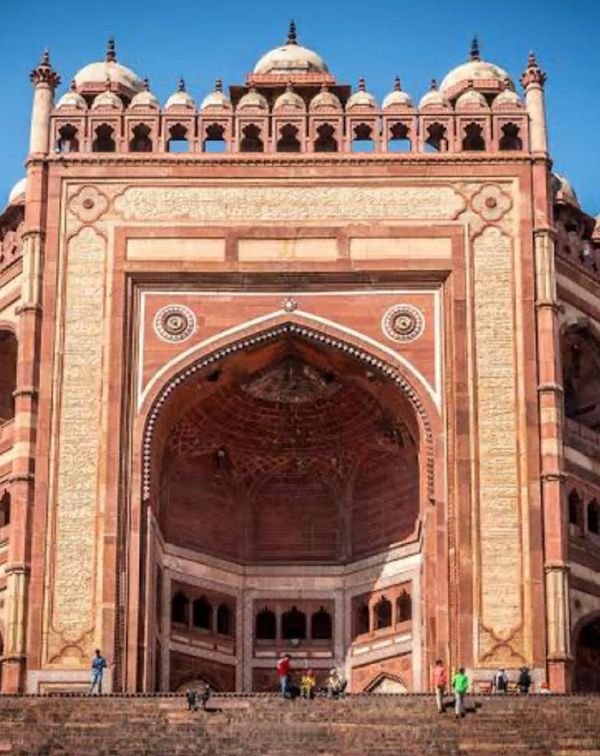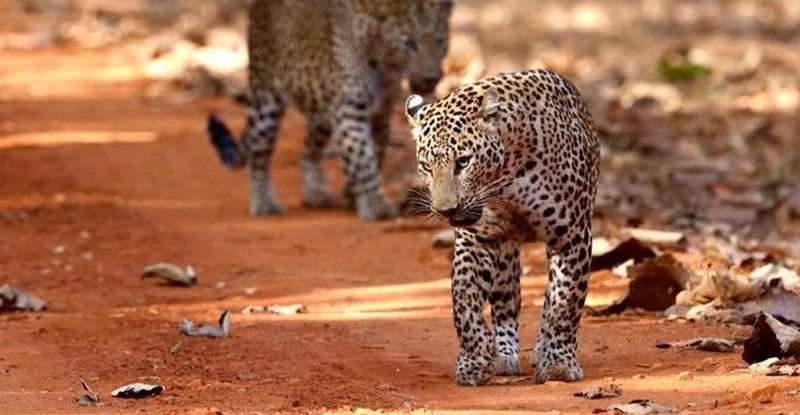



Curated Journeys
Ask any seasoned traveler and they will tell you that the difference between a “good trip” and an “amazing trip” is the quality of guides and the attention to detail put together to create that special journey that would qualify for “an adventure of a lifetime”.
Since our inception in 2004, passion for the outdoors and exploring the unexplored, is the main driving force behind “The Himalayan Outback”. We have committed ourselves to take our clients to the most exotic places to be found & provide them with world class service even in the remotest areas.
As you sweep around a corner, the sight of the magical massive mountains or the never ending ocean or dense jungles high up on a plateau will want you to pull over and take in the . Road-tripping is so much more than just the journey or the destination. It is all about embracing the unexpected and marveling at the everyday. It is about getting a high on the beauty of the landscape and the diversity of the culture coupled with the rich history of each area that you journey through.
Pulling over to buy wild strawberries, foraged mushrooms, or a cup of chai (tea) from kids at a makeshift roadside stall. Stopping to swim in a sea cove or soak in hot springs at sunset. Sighting a pheasant between snow-covered trees. Ditching well laid out tarmac for bone-rattling sections – these are all the things that make a journey special and are part of the master plan.

Agra
Agra
A trip to India is incomplete without a visit to Agra to view the Taj Mahal, one of the “Wonders of the World”. The Taj Mahal is an immense mausoleum of white marble, built between 1631 and 1648 by the Mughal emperor, Shah Jahan, in memory of his favorite wife. This monument is the jewel of Muslim art in India and one of the universally admired masterpieces of the world’s heritage.

Delhi
Delhi
Delhi is a city where the modern and the ancient coexist side by side. This holds true in terms of lifestyles, culture or architecture.
Delhi has a lot to offer being one of the most historic living cities of the world. Wherever you go you will find contrast that will amaze you – broad boulevards that take you down the palatial houses of Lutyen’s Delhi and crowded & narrow alleyways of Chandni Chowk that boasts as one of the oldest markets in India – well over 350 year old. Agra Fort and Fathepur Sikri are two other sites that are not to be missed by anyone visiting the city of Agra
The historic monuments built by the Mughal Emperors & the British even today hold visitors in awe in their attention to detail and magnificent craftsmanship and their size – the Red Fort, President’s Estate, Jama Masjid, Lodhi Garden, Humayun’s Tomb, just to name a few!
Religion has always played an important role in the life of ancient cultures and India is no exception. Hindu, Muslim and Sikh religions have some of their oldest and biggest shrines in Delhi – the Jama Masjid, Gauri Shankar Temple & Sisganj Gurudwara (all located at Chandini Chowk) are historically significant and a delight for those interested in architecture, as is the Lotus Temple.
Tombs of some of the Mughal emperors are beautiful and well preserved monuments – Humayum’s Tomb in particular is a place to enjoy the rich architecture of that era. The Lodhi Gardens has a number of tombs of the rulers of the Lodi Dynasty amongst beautifully laid out gardens.
The imposing Red Fort was the place that the Mughals built and was their seat of power after they moved their capital from Agra to Delhi.
The Qutab Minar is a 234 feet tall tower of victory. The top of this 5-storeyed tower is reached by a flight of 370 steps. Within the compound also stands the famous Iron Pillar of King Chandravarman, erected over 1500 years ago.
The Spice, Flower and Textile markets with their vibrant colours and smells are a treat for the senses and delight for photographers.

Amritsar
Amritsar
The ancient and historic city of Amritsar is a northwestern Indian state of Punjab, and less than 20 miles from the border with Pakistan. At the center of its walled old town, the gilded Golden Temple is the holiest gurdwara of the Sikh religion built in 1589.
Amritsar has been on the trading route for centuries and also on the path that the several armies (including those of Alexander and the Mughals) took to invade India.
Today it has a thriving population of almost 2 million and continues to be the center of India’s trade with Pakistan.
A major tourist destination, Amritsar’s attractions include the Golden Temple, Jalianwalla Bagh, Partition Museum and the Wagah border. Amritsar is also renowned for its cuisine.
Wagah Border or Wagah-Attari border is the last Indian area before the Pakistan mainland. It hosts a ceremony where the soldiers of India’s Border Security Force and Pakistan’s Pakistan Rangers march and parade making it among the top tourist attractions in Amritsar. The area is filled with people on both sides celebrating the patriotic vibe.
Jallianwala Bagh was built in the memory of those who were shot by the British during a peaceful protest on 13th April 1919. Gen Dyer, who ordered his troops to open fire on the defenseless people was assassinated in 1927, in England by Udham Singh, to avenge these deaths.

Nainital
Nainital
Nainital District is located in the Kumaon region of Uttrakhand in North India. It is surrounded by several lakes and is considered as the Lake District of India. Blessed with beautiful valleys, lakes and mountains this is a paradise for “nature lovers”.
The enchanting hill station of Nainital was built around the famous Naini Lake at an elevation of over 2,000 meters. In summer it is one of the most sought after places for visitors who wish to escape the scorching heat in the plains. In winter a white blanket of snow adorns Nainital giving it magical look.
Tourists, both domestic and foreign, flock to this picturesque city in all seasons. Historic buildings, churches and temples make this a delightful city to visit. Nainital was a favorite city with the British who built a number of prestigious educational institutions, which are even today considered amongst the best in India.
Nainital and the area around have a large number of bird species throughout the year with the Pangot and Kilbury Bird Sanctuary located in its midst. The Himalayan Monal, Koklass pheasant, Himalayan Bulbul, Ultramarine Flycatcher, Maroon Oriole, a variety of woodpeckers and owls are just some of the birds that make this area a Birders paradise.

Jim Corbett National Park
Jim Corbett National Park
The landscape of this park includes rivers, hills, grasslands and lakes. It is home a wide array of wildlife, including tigers, elephants, a variety of deer (sambar, spotted deer & barking deer), wild boars, black bears and sloth bears, monkeys (rhesus & langoors), otters, yellow-throated martens and many more.
In 1971 Project Tiger was launched in Jim Corbett National Park in order to protect the depleting numbers of the Royal Bengal Tiger. The success of Project Tiger has seen a gradual increase in the tiger population in almost all the wildlife parks across India. Presently the population of tigers exceeds 250 in Corbett.
Not to be outdone, the rivers in Corbett abound with aquatic life – the beautiful Golden Mahseer and the Goonch (catfish) are just some of the few fish that can be found here. The mugger crocodile (marsh crocodile) and the ghariyal (fish eating crocodile) can be seen in the water bodies of the Jim Corbett National Park.

Jaipur
Jaipur
Most tourists who visit India have Rajasthan on their “bucket list” & the city of Jaipur around which the entire culture and history of Rajasthan revolves around.
Jaipur was founded in 1727 by the king, Maharaj Sawai Jai Singh II. Jai Singh consulted various scholars in order to help design the city. Jaipur was built over a period of four years – in order to keep the city secure from enemy forces the city was designed with large walls in order to fortify it and gates were installed in order to check the flow of outsiders.
Jaipur, part of the famous “Golden Triangle” (made up of the ancient cities of Delhi, Agra & Jaipur), is renowned for its architecture and the various palaces, forts & buildings that have made this city a “must visit” places for visitors. Jaipur is a UNESCO World Heritage site.
The most famous of its buildings is the City Palace – part of this palace is open for visitors, giving them a glimpse into the opulent lifestyles of the rulers of Jaipur. The palace is a combination of Mughal and Rajput architecture. The present royal family still resides in part of the City Palace Another gem is the Jantar Mantar Observatory, located across from the City Palace.
This observatory is built outdoors and has various structures that enable astronomical calculation using the sun. The sundial is almost 80 feet high and can tell the time to an accuracy of 2 seconds Within the city limits the Hawa Mahal (Palace of Wind) is probably the most visited and photographed site in Jaipur. Built in 1799, its façade has rows of 953 windows from where the ladies of the royal household could watch the various festivals and processions – all this could be done from behind the latticed windows without any fear of being seen by anyone from outside.

Ranthambore
Ranthambore
Ranthambore National Park is a vast wildlife reserve near the town of Sawai Madhopur in Rajasthan, northern India. It is a former royal hunting ground and home to tigers, leopards and marsh crocodiles. Its landmarks include the imposing 10th-century Ranthambore Fort, on a hilltop, and the Ganesh Mandir temple.

Testimonials
Misty you are the best host in the world and your guides and crew are world class.
Thanks once again, and we will stay in touch!!
Our whole family had an extraordinarily time, each day filled with new and fun experiences,great food, comfort and wonderful care from all of the staff. Truly a memory that will be with us in many ways in the years to come. Thank you.
I appreciate the great attention to detail and safety’s.From the wonderful pillows on the bed , to a walking guide who sets a good pace yet is aware of the client at every step, this place, this team – excellent.





























